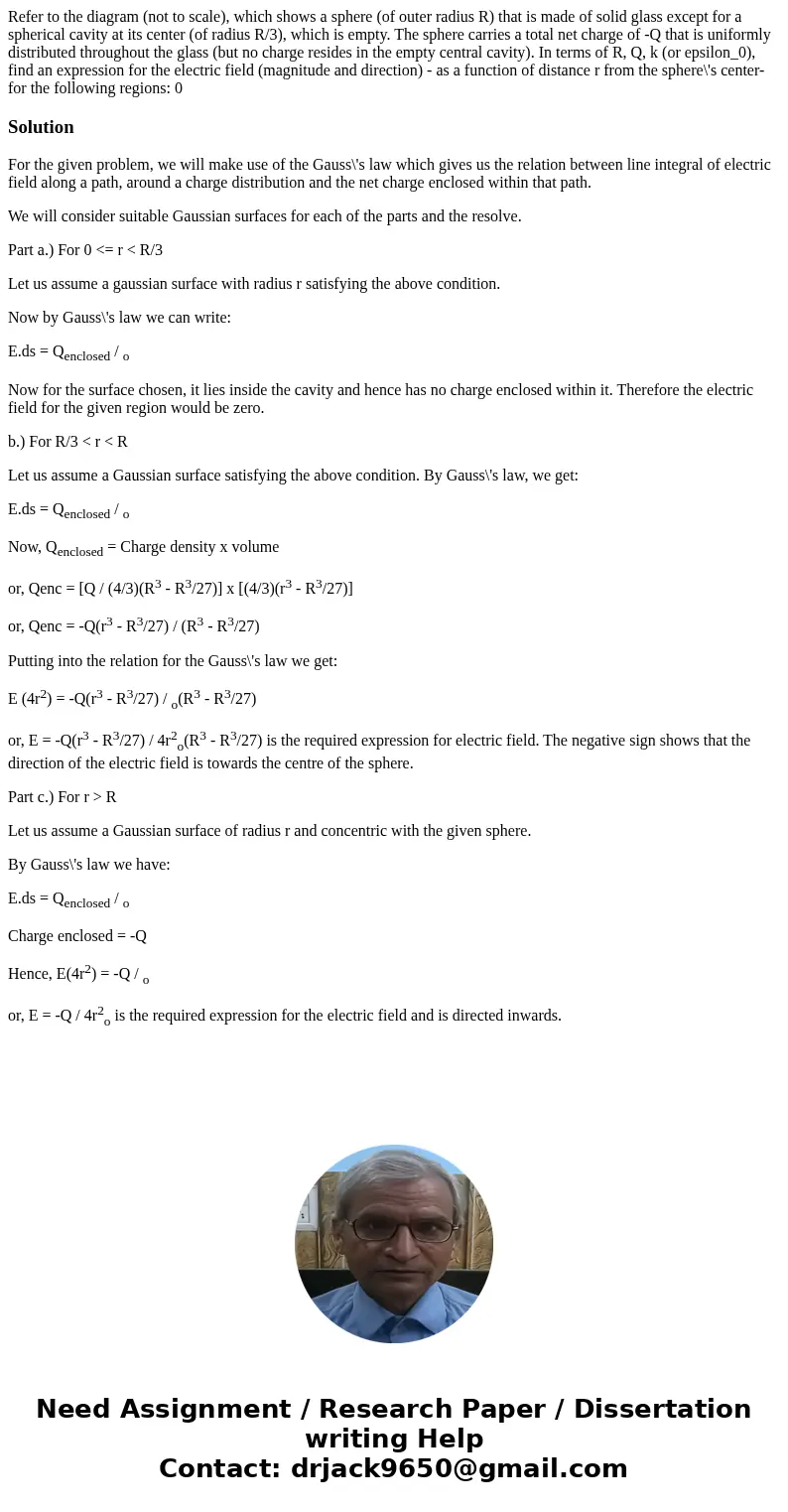Refer to the diagram not to scale which shows a sphere of ou
Solution
For the given problem, we will make use of the Gauss\'s law which gives us the relation between line integral of electric field along a path, around a charge distribution and the net charge enclosed within that path.
We will consider suitable Gaussian surfaces for each of the parts and the resolve.
Part a.) For 0 <= r < R/3
Let us assume a gaussian surface with radius r satisfying the above condition.
Now by Gauss\'s law we can write:
E.ds = Qenclosed / o
Now for the surface chosen, it lies inside the cavity and hence has no charge enclosed within it. Therefore the electric field for the given region would be zero.
b.) For R/3 < r < R
Let us assume a Gaussian surface satisfying the above condition. By Gauss\'s law, we get:
E.ds = Qenclosed / o
Now, Qenclosed = Charge density x volume
or, Qenc = [Q / (4/3)(R3 - R3/27)] x [(4/3)(r3 - R3/27)]
or, Qenc = -Q(r3 - R3/27) / (R3 - R3/27)
Putting into the relation for the Gauss\'s law we get:
E (4r2) = -Q(r3 - R3/27) / o(R3 - R3/27)
or, E = -Q(r3 - R3/27) / 4r2o(R3 - R3/27) is the required expression for electric field. The negative sign shows that the direction of the electric field is towards the centre of the sphere.
Part c.) For r > R
Let us assume a Gaussian surface of radius r and concentric with the given sphere.
By Gauss\'s law we have:
E.ds = Qenclosed / o
Charge enclosed = -Q
Hence, E(4r2) = -Q / o
or, E = -Q / 4r2o is the required expression for the electric field and is directed inwards.

 Homework Sourse
Homework Sourse